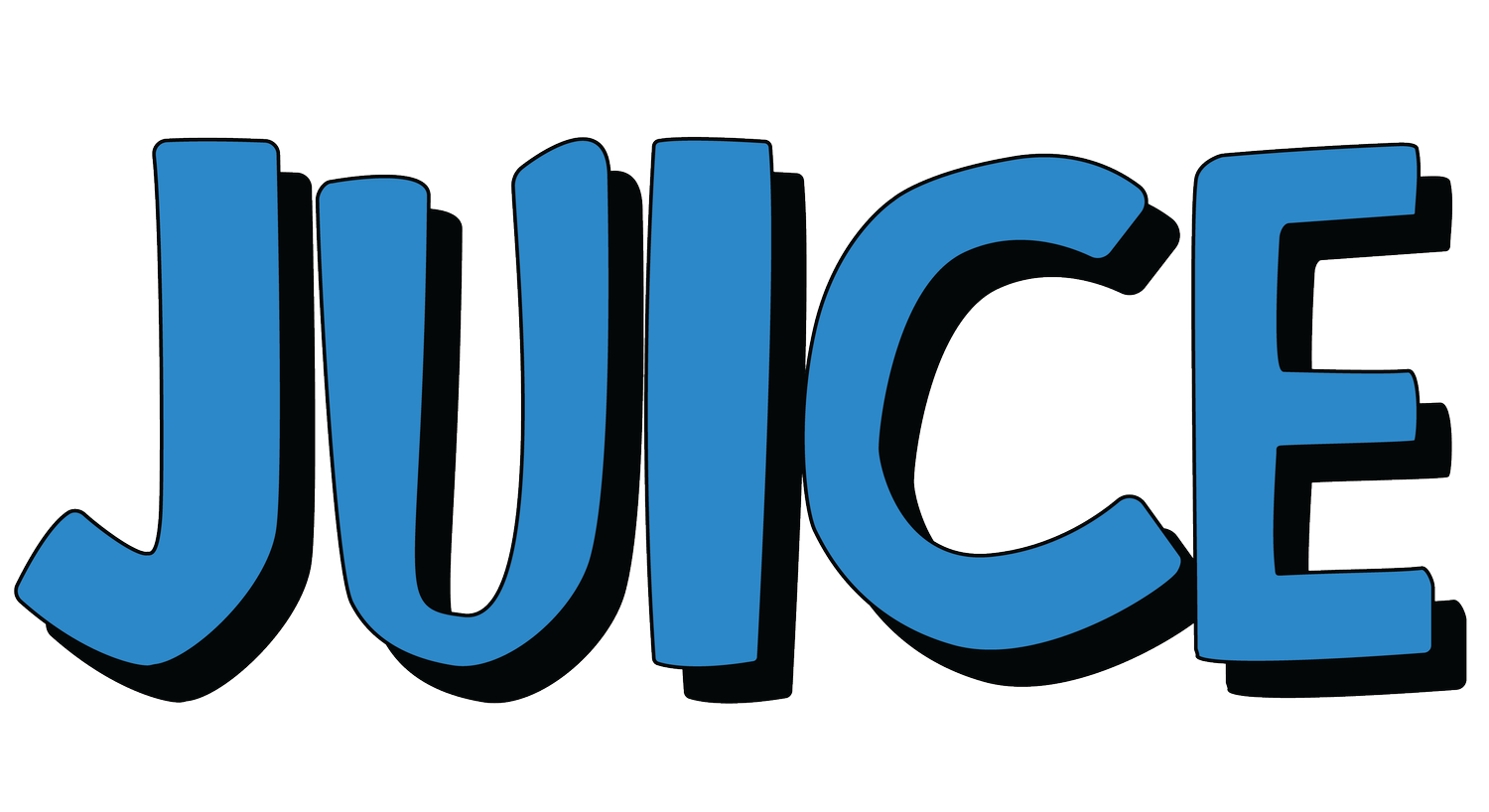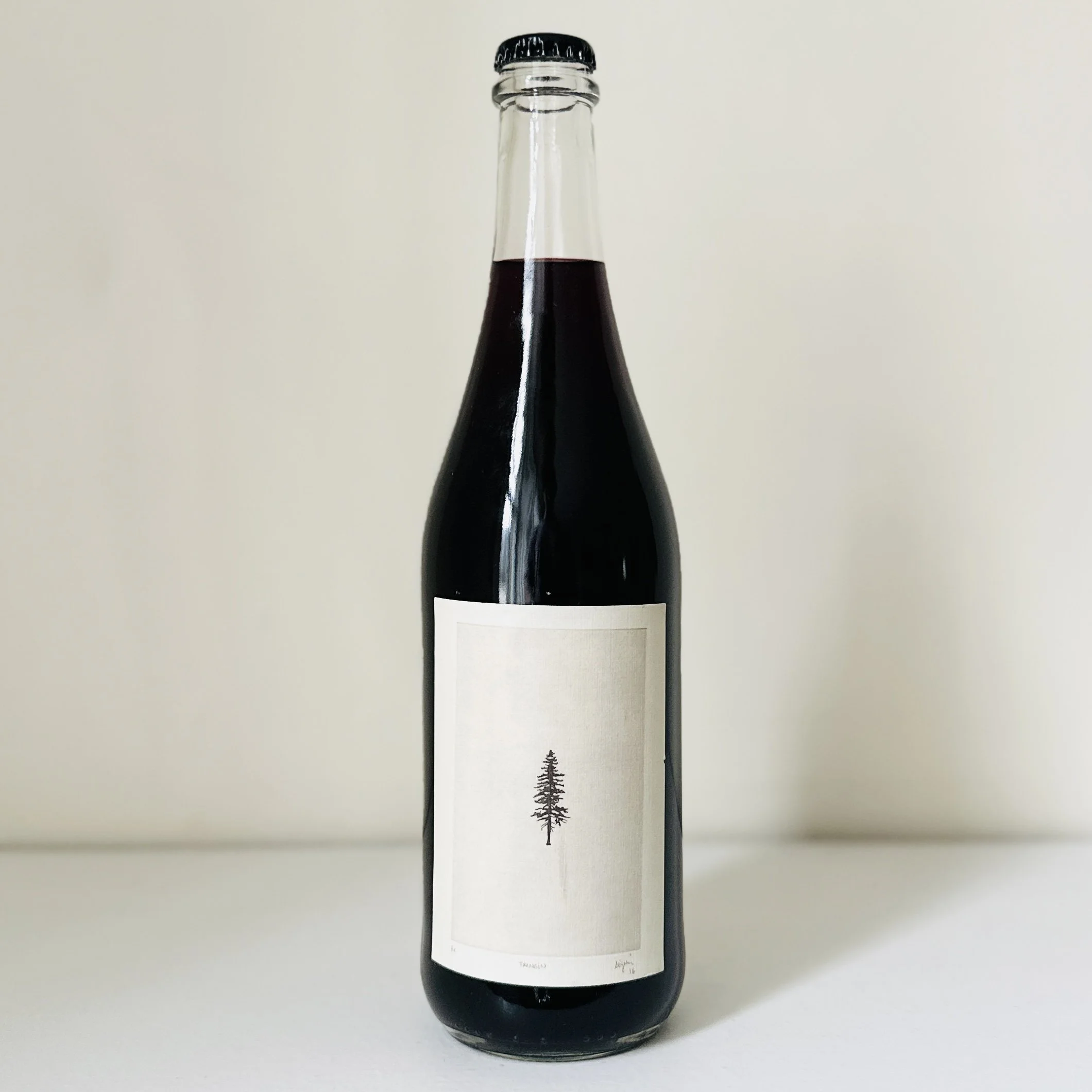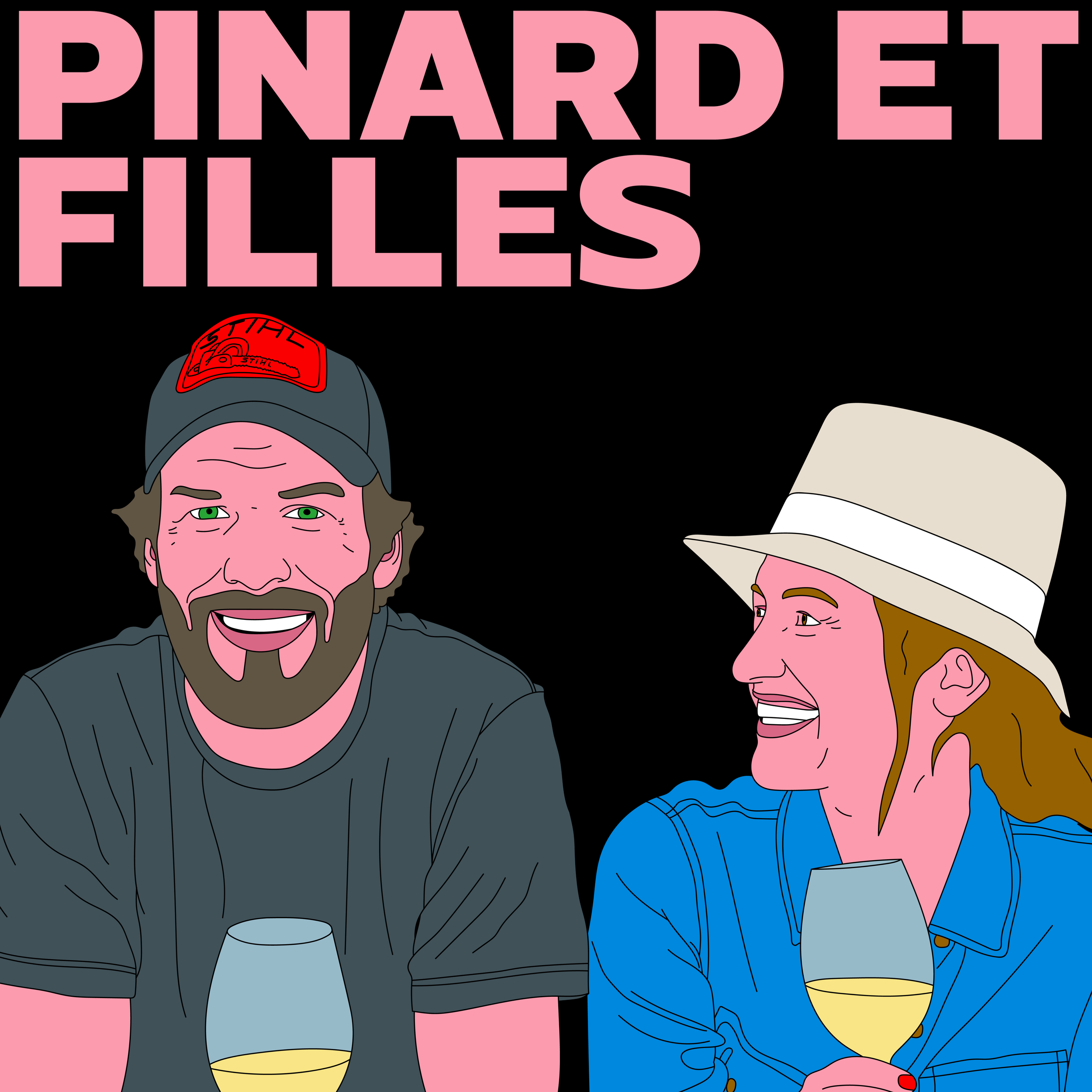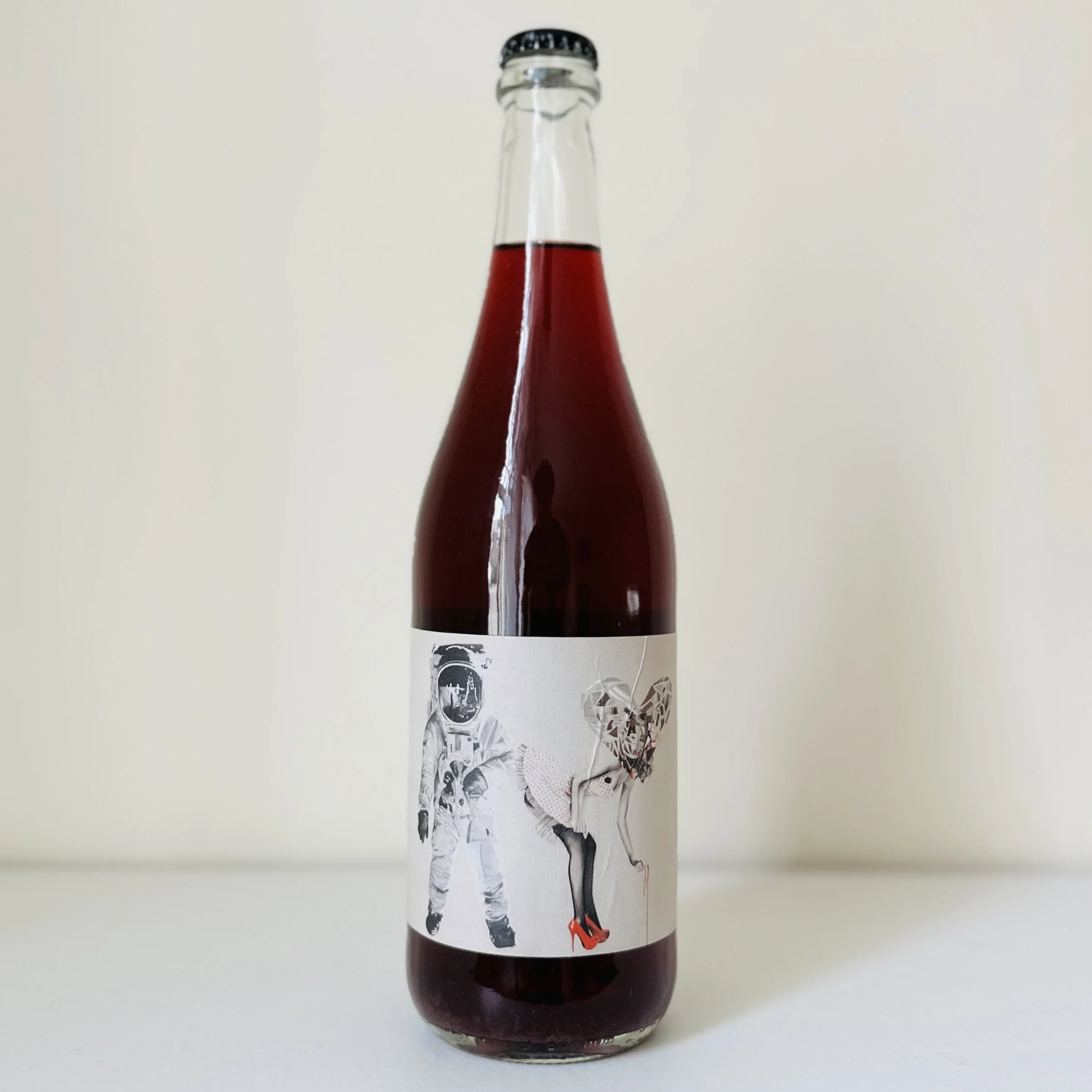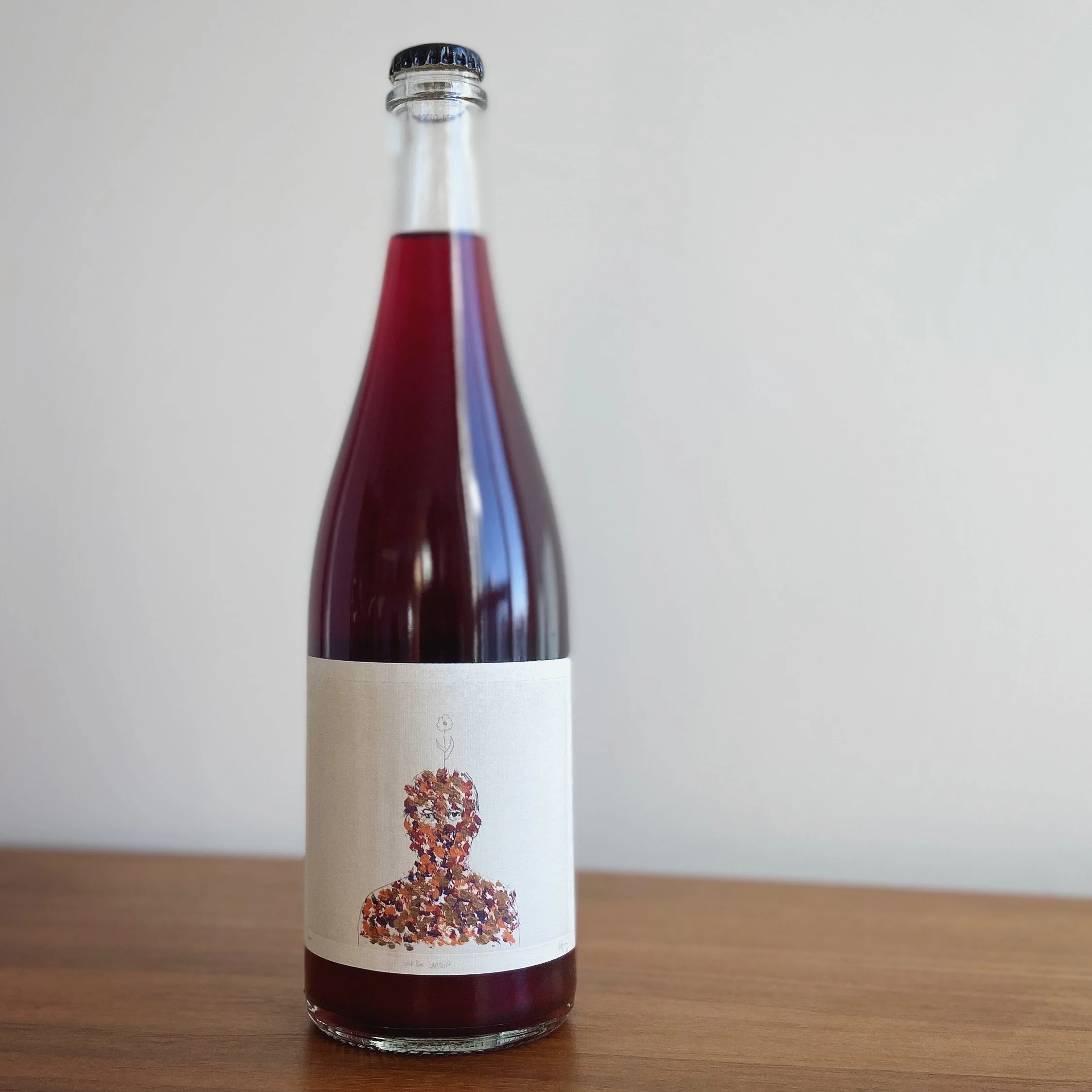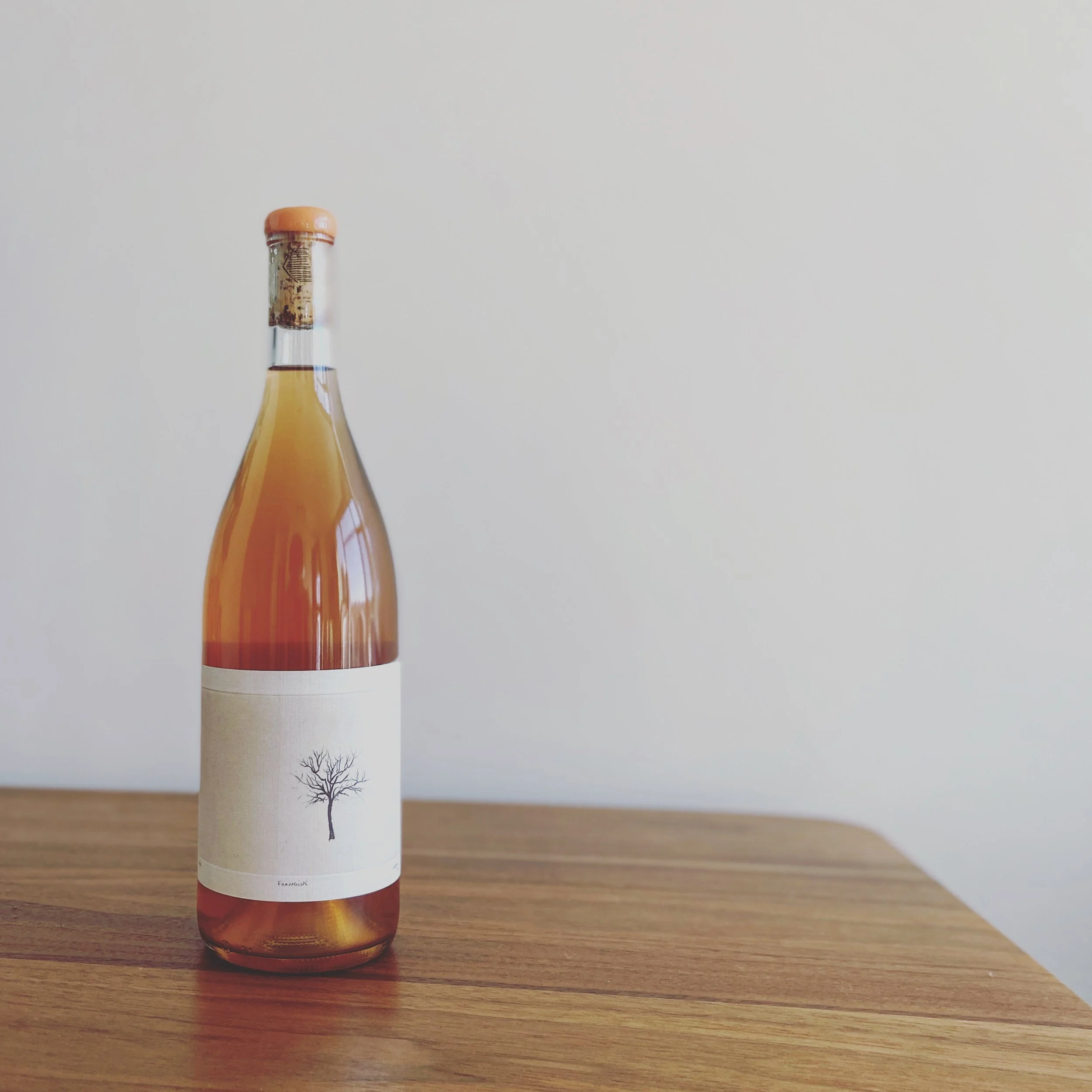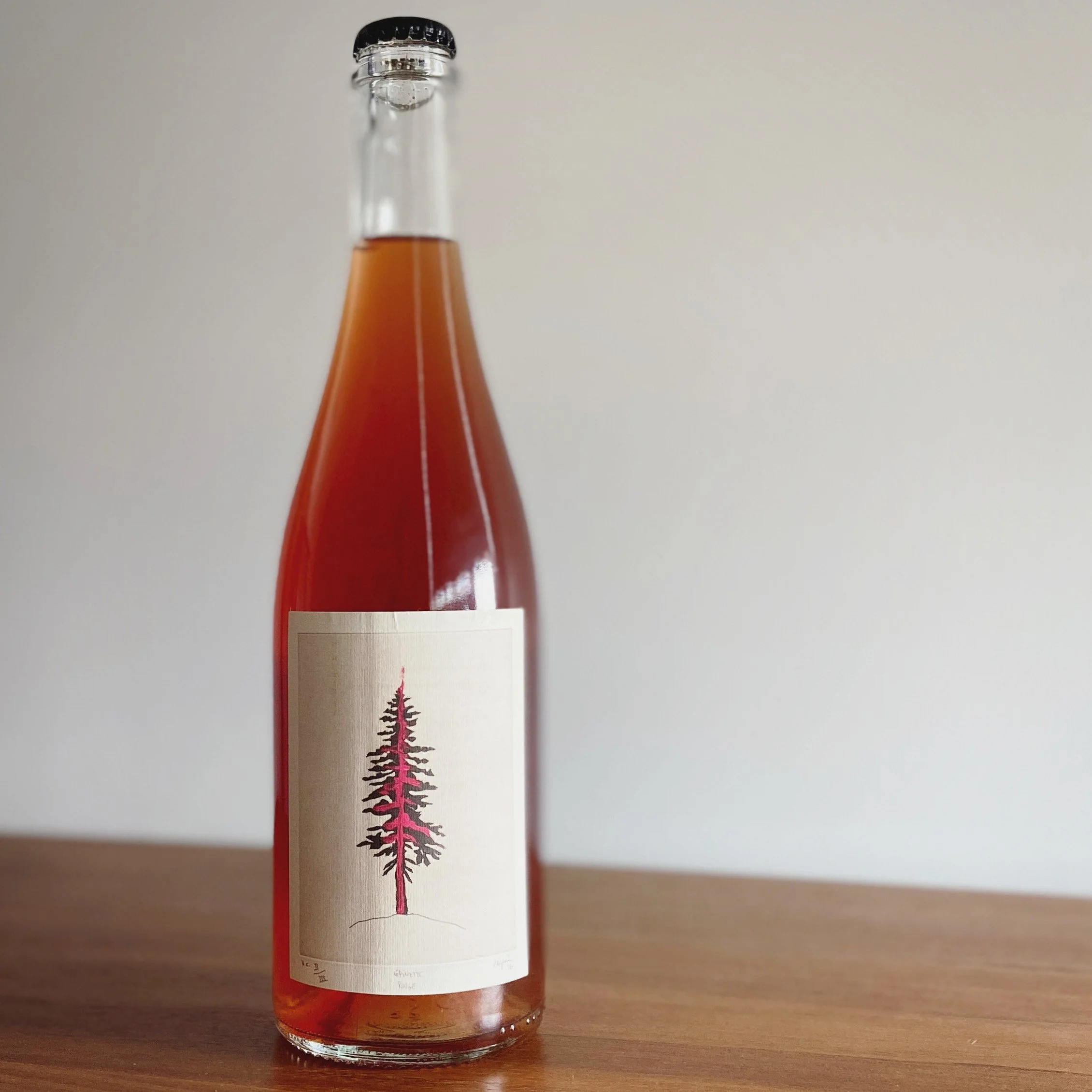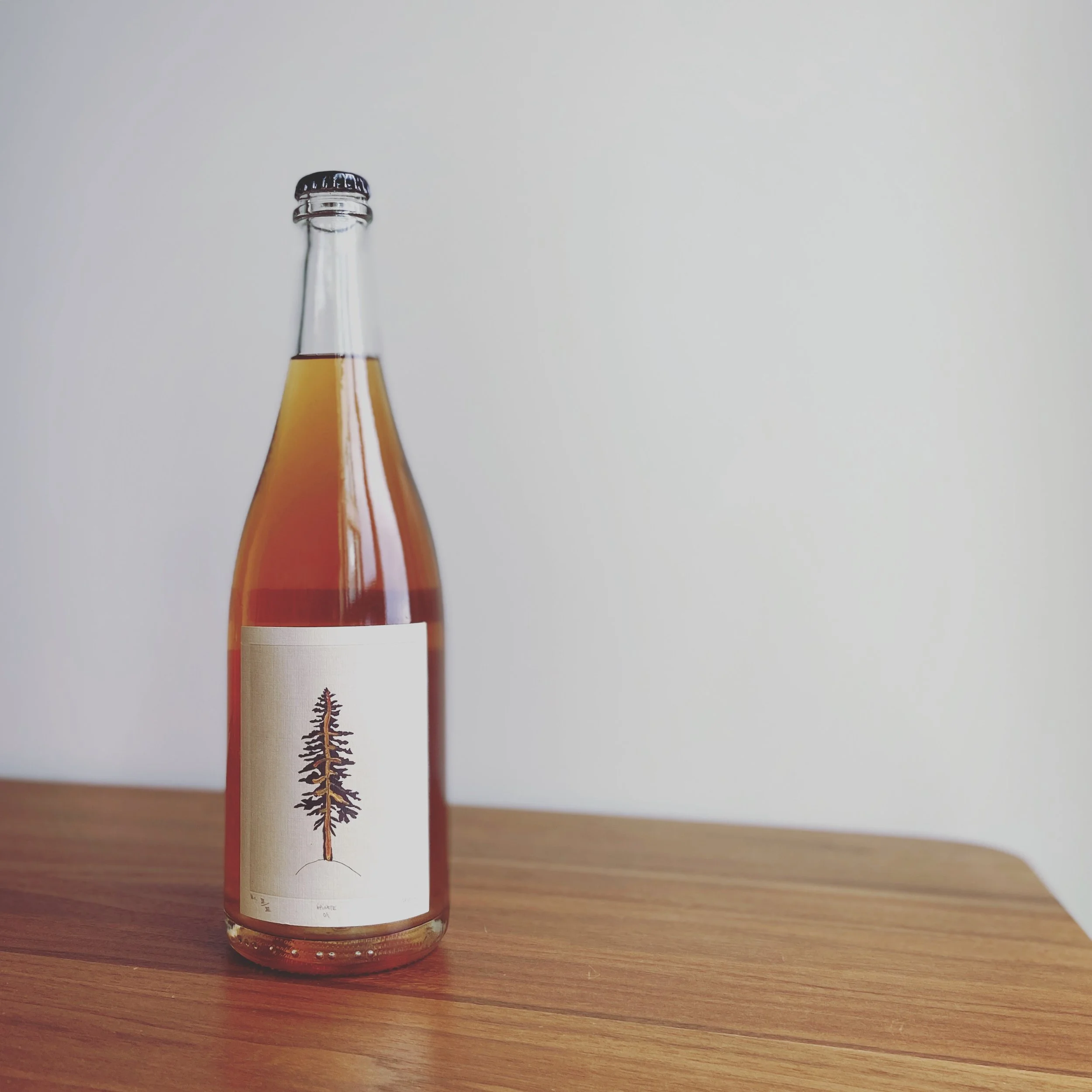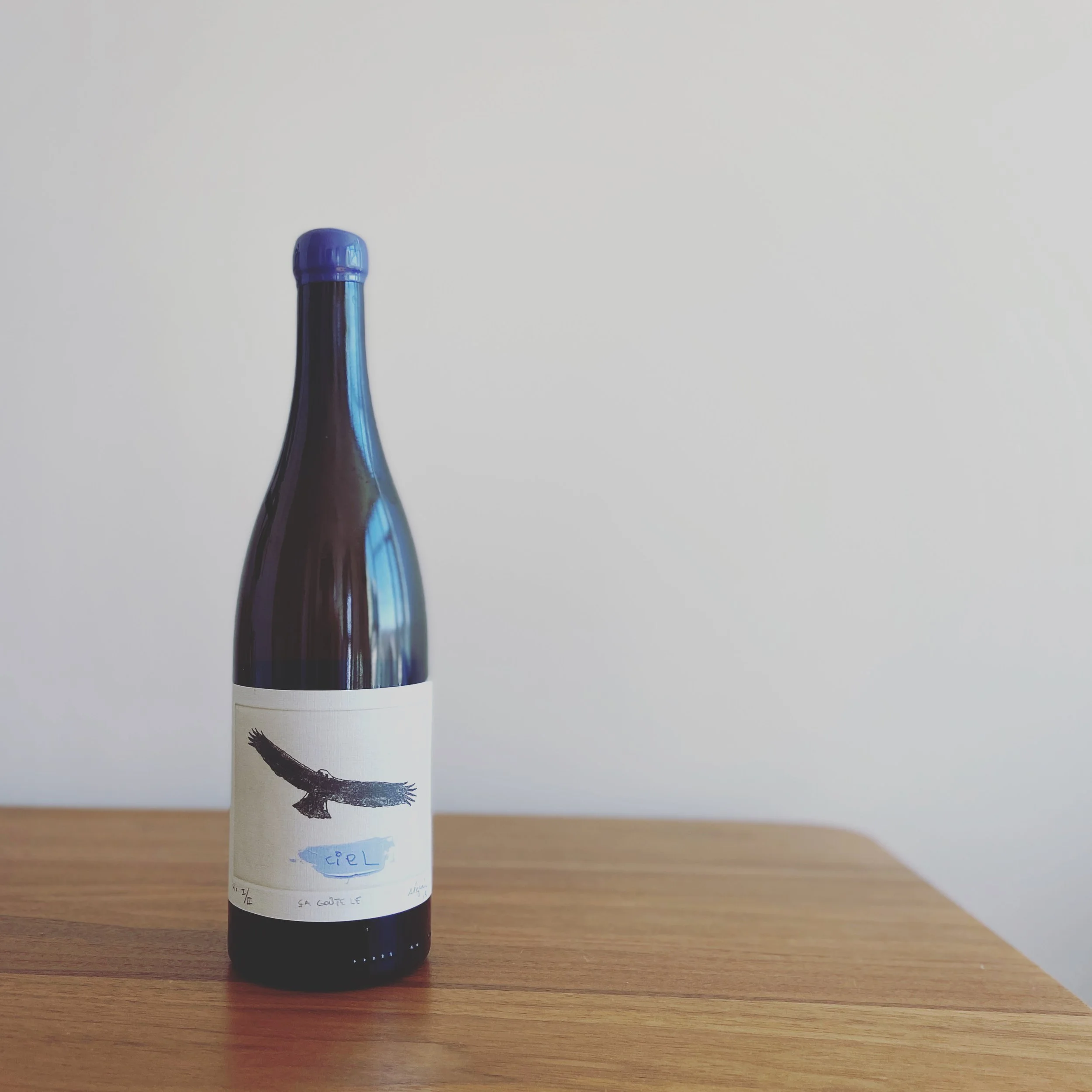PINARD ET FILLES
-
I was first introduced to Frederic Simon’s wines in the fall 2017. Emily Campeau, ex-sommelier at Candide, an absurdly enchanting restaurant and advocate for Quebec’s wines, shared a bottle with me, and I was immediately mesmerized. A few days later, I was able to snag a second bottle thanks to some friends at Marconi; goodness knows where they got it from, but I was sensationally grateful for their generosity. The wines were already a cult commodity, sold out instantaneously, generating cacophonous excitement, yet living up to their creator’s ambitions. They sizzle with energy, the buzz of a thousand bees in every bottle.
In February 2018, we began chatting on social media, and I boldly asked if they’d ever have any wine for us here in Alberta. The answer, much to my surprise, was maybe. With their young vineyards coming into their own and new leases in Lanaudière on the Saint Lawrence, their production had grown from impossibly small (1200 bottles in their inaugural vintage) to merely tiny.
I was walking home on a warm April day when Frederic finally called me to follow up on our inquiry. I paced nervously in the park near my house, asking a million questions about farming, soil types, and their winemaking philosophy. At the end of the call, he agreed to sell us some wine, which at the time would have made us their first export market. I followed up via email a few days later but wouldn’t hear back from them until January 2021. It turns out he was a little too optimistic about his production, and with courters like Zev Rovine and the Grape Witches knocking at the door, we had to take a temporary back seat. Luckily, for wines this transcendent, we’re improbably patient.
-
Frederic Simon sold his shares in a Montreal-based restaurant and importing company, as well as a few paintings, to do what many of us dream of: planting a vineyard. Wanting to raise his daughters in an idyllic setting, they moved to a small farm and B&B near Lac Memphremagog in Estrie, west of Montreal. Catherine Bélanger, his wife and partner, is a celebrated sommelier and restauranteur operating haunts like Pullman and Moleskine – must-visits for anyone who cares about hospitality. They began planting almost immediately, but the first wines weren’t released until 2015, five years after they purchased the cleared plot surrounded by forest.
-
In 1608, Champlain planted Vitis Vinifera vines along the Saint Lawrence, but they didn’t survive their first winter. Hybrid varieties have been planted in the area since the 19th century, but commercially viable vineyards weren’t planted in Quebec in earnest until the 1980s. Roughly 160 wineries now exist in the province, with 10% practicing organic viticulture, although this number is trending upwards. Producers like Domaine du Nival and Les Pervenches pioneered natural wine in the province, but Fred was the first to take it to its logical conclusion – nothing added, nothing removed.
-
Despite sharing a latitude with famed French regions like Bordeaux, Quebec doesn’t benefit from the warmth of the gulf stream. Instead, winters are freezing, only somewhat tempered by the lake and estuary. For most grape varieties, bud damage can occur between ~-10º and -20º, with most vines risking death only slightly colder than that. Vines are slow to acclimate to the cold, so if harvest is pushed late, not allowing the vine to rest before winter, or if there is a sudden drastic drop in temperature, the risk of damage increases. This means Fred and his team need to bury their vines in the winter, a task that adds nearly two months of physical labour to their season. Although buttage, burying the vines with dirt, was once widespread in many of the coldest French regions, they opted for a combination of hay and geotex, an insulating fabric that prevents massive fluctuations. Spring frosts are just as worrisome, so this method performs double duty, keeping the vines cold and, therefore, essentially dormant during unseasonably early warm snaps that could make the vine vulnerable. A windmill also helps stir up cold, stagnant air, mixing it with warmer pockets above the vineyard – sometimes, even a degree or two can make all the difference.
Their 5ha are planted on the typical clay and silt of the region, referred to as Limon. Fred opted for tight spacing between the vines, high-density like you’d see chez Lamy in Burgundy. He farms organically but isn’t pursuing certification claiming conventional farmers should be taxed to pay for certification, pointing out the absurdity that the ones who aren’t abusing the environment are the ones who are financially punished.
-
Fred is a self-professed autodidact, learning more from experimentation and hard work than through academia and tutelage. His years working in the wine trade gave him access to the world’s finest vignerons, many of whom influenced his style now. Unlike many of his contemporaries, if a trial doesn’t work out, it doesn’t get bottled. This dedication to quality at all costs is apparent in every release.
With massive vintage variations, he has to stay on his toes. He doesn’t feel compelled to release the same cuvées every year, and even when he does, they can swing wildly from style to style. His goal is to make wine that tastes like it comes from Quebec; his reverence for the wines of France hasn’t blurred his vision. His Pinot Noir isn’t supposed to taste like Burgundy, and even when techniques like oxidation are borrowed from the Jura, the outcomes are wholly coherent, realized, and unique.
-
Initially, Fred wasn’t entirely convinced hybrid grapes could make compelling wines. A visit to Vermont’s equally culty Garagista changed his mind. Working with varieties like Frontenac (Blanc, Gris, & Rouge), Marquette, and La Crescent, he’s added a new dimension to Canadian wine’s identity. It’s hard to pinpoint why these wines display such a strong sense of place, but there’s no denying their transparency. They’ve also planted various vinifera grapes, including Chardonnay, Pinot Noir, Riesling, Dornfelder, and Savagnin. These vines may be poorly adapted to the climate, but they shine thanks to dedicated farming and brilliant winemaking. Look out for these limited releases only in the best vintages.
-
Painter and novelist Marc Seguin has been at the heart of this project since the beginning. Fred, a painter in his own right, was a fan and collector of Marc’s work for years, and when it became time to design a label, he couldn’t think of anyone who’d capture his vision more. Despite the artist’s fame and the enormous price tag his pieces were now fetching, Fred reached out. A sympathetic man who understood the pursuit of beauty through a connection to the land agreed to design the labels in exchange for wine. The artistic collaborations don’t end there. He and his vineyard team were featured in GQ as part of Montreal-based fashion designer Isaac Larose’s Larose Paris lookbook.
-
The most important thing I can convey is that this is more than just a business to their family. The winery aims to cultivate a lifestyle, a cross-section of agriculture and art, celebrating craft and artisans dedicated to the sensitivities of humanity. There’s a sentimentality to these wines – an authentic quest for interaction, capturing the spark of life and reminding people how valuable it is.
Fred is self-deprecating, showing huge surprise at the success of the wines but also wry pride in his accomplishments. Rumour has it people line up at dawn to get the new release, coveting their single bottle allocation, while our friends in Toronto sold their entire first allocation in a couple of hours. They’ve been championed by David McMillan of Joe Beef and are now imported into Europe by none other than the legendary biodynamic farm Meinklang. With listing everywhere from Au Pied de Cochon to Paris Paris, these wines are the real deal.
GROWN AND MADE ON THE TRADITIONAL LANDS OF THE: WABANAKI (DAWNLAND CONFEDERACY) | N’DAKINA (ABENAKI / ABÉNAQUIS)
2022 FRANGIN
This is Fred and Catherine’s flagship red wine. This vintage is made from Marquette (50%), Frontenac Noir (30%), and Petite Pearl (20%). Whole clusters were added to tank for a two week infusion style fermentation; no punch-downs or pump-overs are done. The wine is then pressed into tank to finish fermentation and a six month élevage. It was bottled unfined, unfiltered, and without SO2. 12% ABV
2022 NUANCE DE GRIS
This wine is a pure expression of Frontenac Gris. It was direct pressed into neutral forty-year-old foudre for fermentation and élevage without any bâtonnage. The grape’s pink skins impart a delicate golden colour to the wine, suggesting skin contact when there was none. It was bottled unfined, unfiltered, and without SO2.
2022 HONEY MOON
This wine is a blend of two of their historic cuvées, Frangine and Vin de Jardin. The former is made from La Crescent, fermented and aged on skins for four months. The latter is made from Frontenac Noir, Gris, and Blanc, partially direct pressed, partially macerated in amphora, and partially carbonically macerated. The finished wine is roughly a quarter of each variety making for something between white, red, rosé, and orange wine. It was bottled unfined, unfiltered, and without SO2.
2022 WINE LOVE ME
Half this wine is made from La Crescent that spend 90 days on skins. The other half is a blend of Riesling, Hibernal, La Crescent, and Brianna direct pressed into flex tank and neutral barrel. It was bottled unfined, unfiltered, and without SO2. 11.5% ABV
2021 ROYALE
Frederic believes this is the greatest red wine he’s ever made from hybrids. It is made from Marquette, a complex hybrid developed in Minnesota by Peter Hemstad and James Luby. It was first created in the late eighties but only became commercially available in 2006 after extensive trials. It’s cold hardy down to -29oC and resists downy mildew, powdery mildew, and botrytis with relative ease. Even Jancis Robinson seems to believe in the potential of this variety thanks to its Syrah-like spice. After a moderate maceration on skins the wine is pressed off into 228L barrel for élevage. It is bottled unfined, unfiltered, and without SO2. 11% ABV
2021 VIN DE JARDIN
This cuvée features all three expressions of the Frontenac Grape: Rouge (33%), Blanc (33%), and Gris (33%). The grapes were partially whole-cluster fermented for semi-carbonic maceration, partially direct pressed into amphora, and partially foot-trod and fermented on skins. After a short élevage the wine is bottled without fining, filtration, or SO2.
2021 FRANGINE
This wine is made from Le Crescent, a complex hybrid developed in the 80s in Minnesota but not released commercially until 2002. One of its parent grapes comes from a hybrid created by legendary grape breeder Elmer Swenson from Muscat of Hamburg which retained its stunning aromatic intensity. It can survive temperatures as low as -38º. The grapes were fermented and raised on skins for a total of 100 days before being pressed off to complete élevage. It was bottled unfined, unfiltered, and without SO2. 12.8% ABV
2021 PINOT NOIR EN EQUILIBRE
This wine is only made in the best vintages; the last time all the climactic factors aligned was in 2017. The organic grapes come from their farm in Magog. Vitis Vinifera is particularly challenging to grow here so unprecedented care must be taken to avoid disease and ensure ripeness. The grapes are destemmed and fermented in open top tank for four weeks before being pressed off into barrel. After élevage the wine is bottled unfined, unfiltered, and without SO2.
2021 CHARDONNAY VOL AU DESSUS DU COUCOU
This wine is only made in the best vintages; the last time all the climactic factors aligned was in 2016. The organic grapes come from their farm in Magog. Vitis Vinifera is particularly challenging to grow here so unprecedented care must be taken to avoid disease and ensure ripeness. The grapes were direct pressed into neutral 228L barrel for both fermentation and élevage. It is bottled unfined and unfiltered without SO2.
2021 VERRE DE GRIS
This wine is made from Frontenac Gris, an extremely complex hybrid developed in Minnesota in the late 70s with parentage well beyond Vinifera, Labrusca, and Riparia. The pink skinned colour mutation was first observed in the 90s but wasn’t commercially available until a decade later. It is extremely cold-hardy and resistant to downy mildew making it an ideal candidate for organic viticulture. Fred crushes the grapes and lets the juice macerate with the skins for two days before pressing off into amphora for fermentation and élevage. It was bottled unfined, unfiltered, and without SO2.
2020 BALBUTIEMENTS
This wine is made from equal parts organic Frontenac Blanc and Gris grown on sandy soils. The grapes are direct pressed into barrique for a twelve-month fermentation and élevage. It is then racked and bottled with a small amount of yeast and sugar for secondary fermentation in bottle. After eighteen months the wine is disgorged and released without dosage. 12.8% ABV
2020 BAMBINE
This cuvée is equal parts La Crescent and Frontenac Blanc. The grapes were co-fermented on skins for three months before being pressed off into neutral 400L barrels. The wine is then bottled for traditional method secondary fermentation. After a year on lees the wine is hand disgorged. It is unfined, unfiltered, and bottled without SO2 or dosage. 13.7% ABV
2020 CIEL OUVERT
This wine is made from Frontenac Blanc, the white skinned mutation of Frontenac. The grapes were whole-cluster pressed into barrel for fermentation and élevage. As an ode to the Jura, Fred decided to leave the barrels un-topped, allowing gentle oxidation, and concentrating the flavours. It was bottled unfined, unfiltered, and without SO2.
